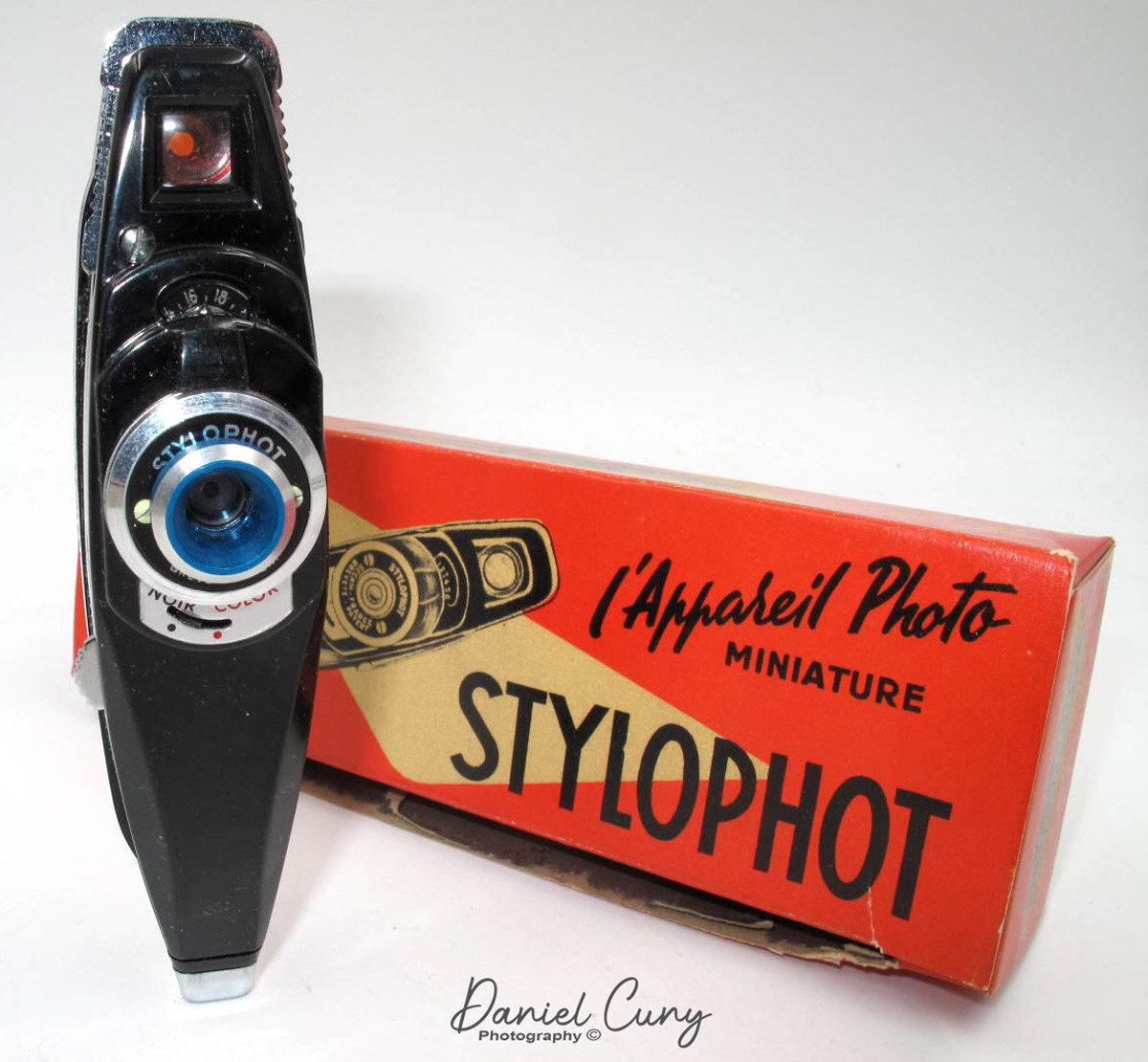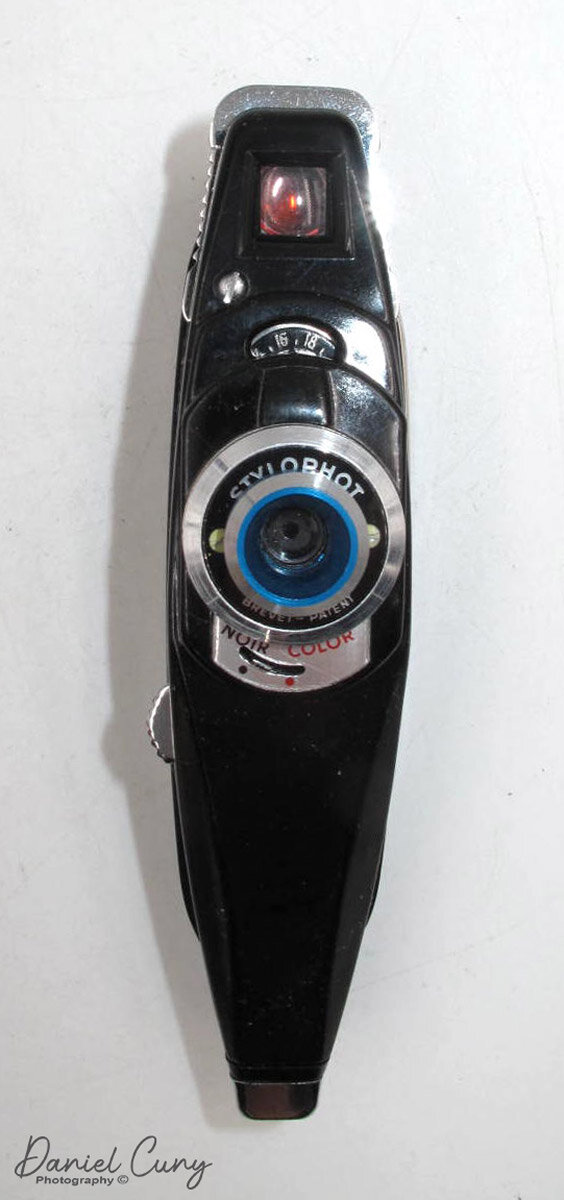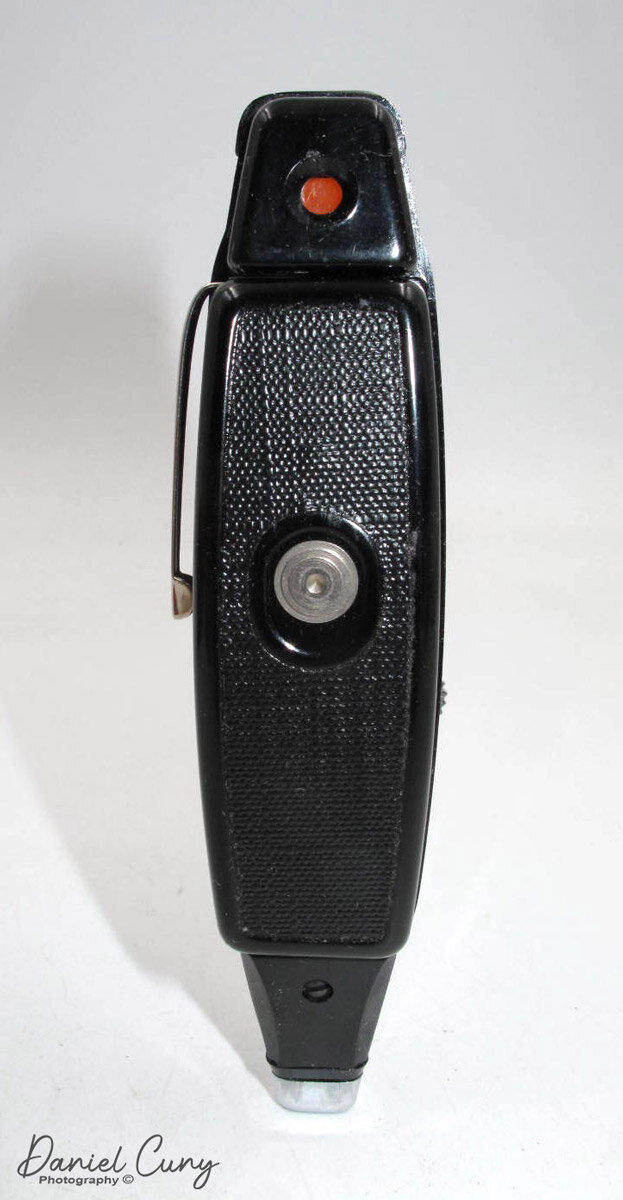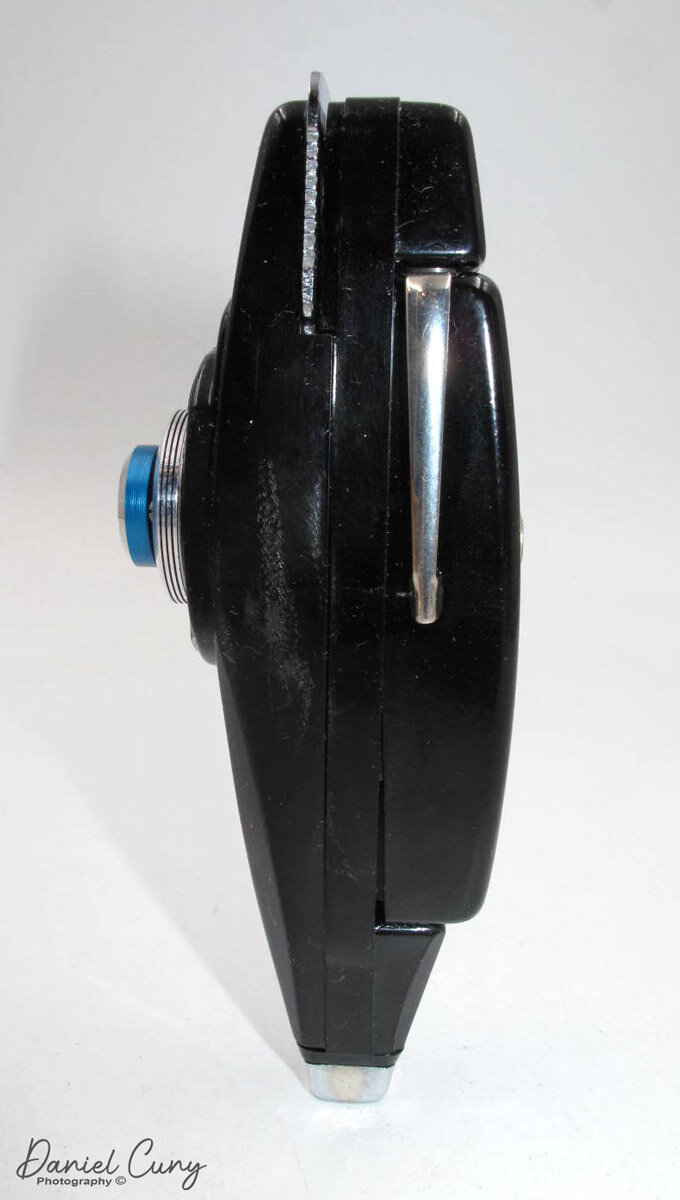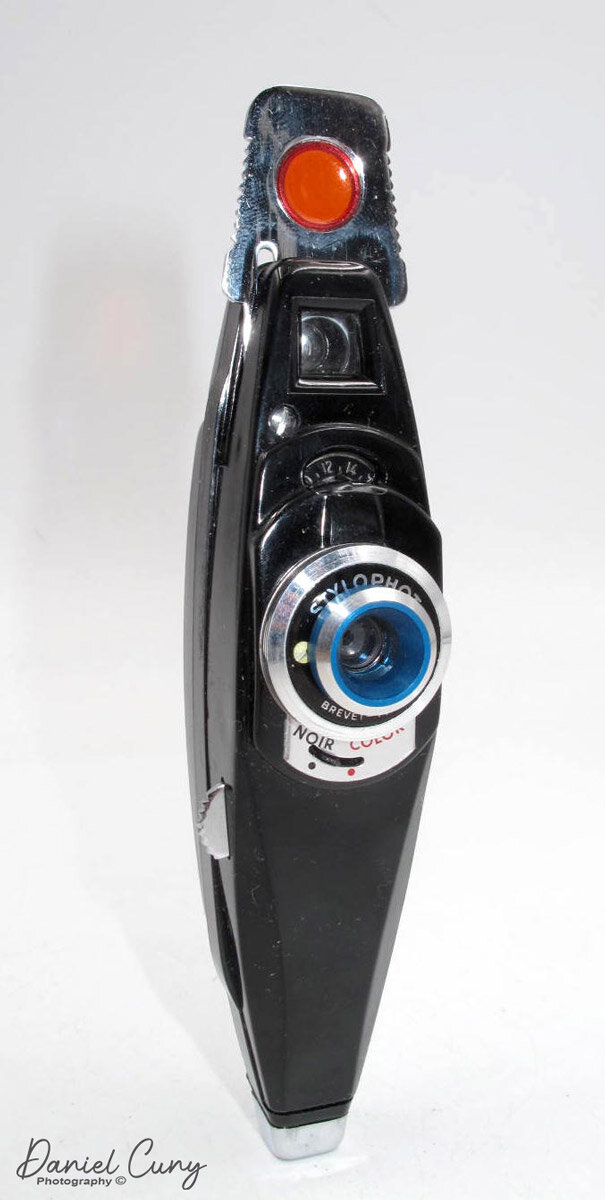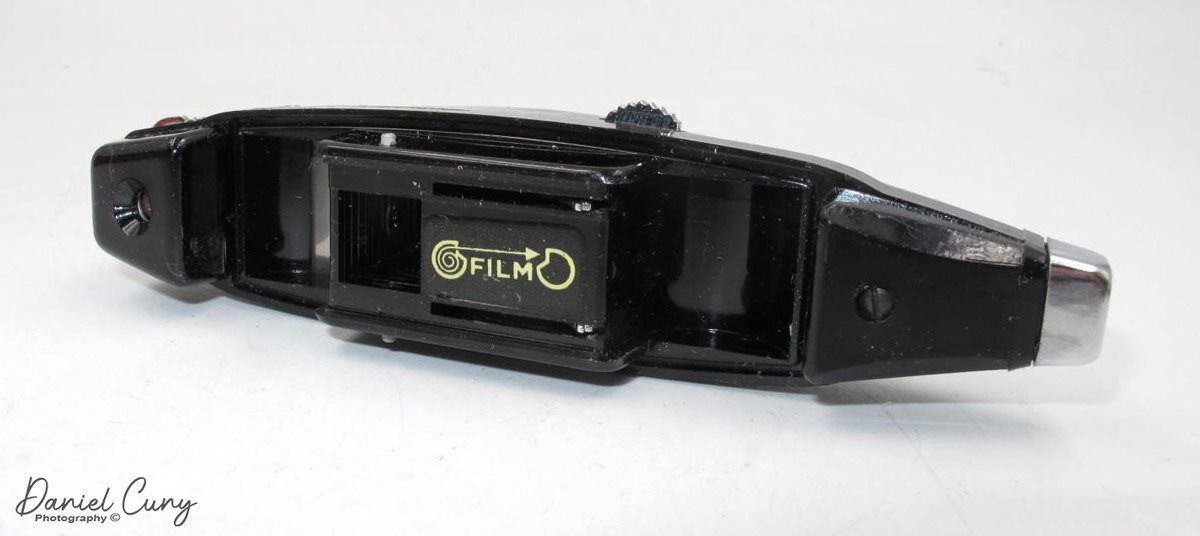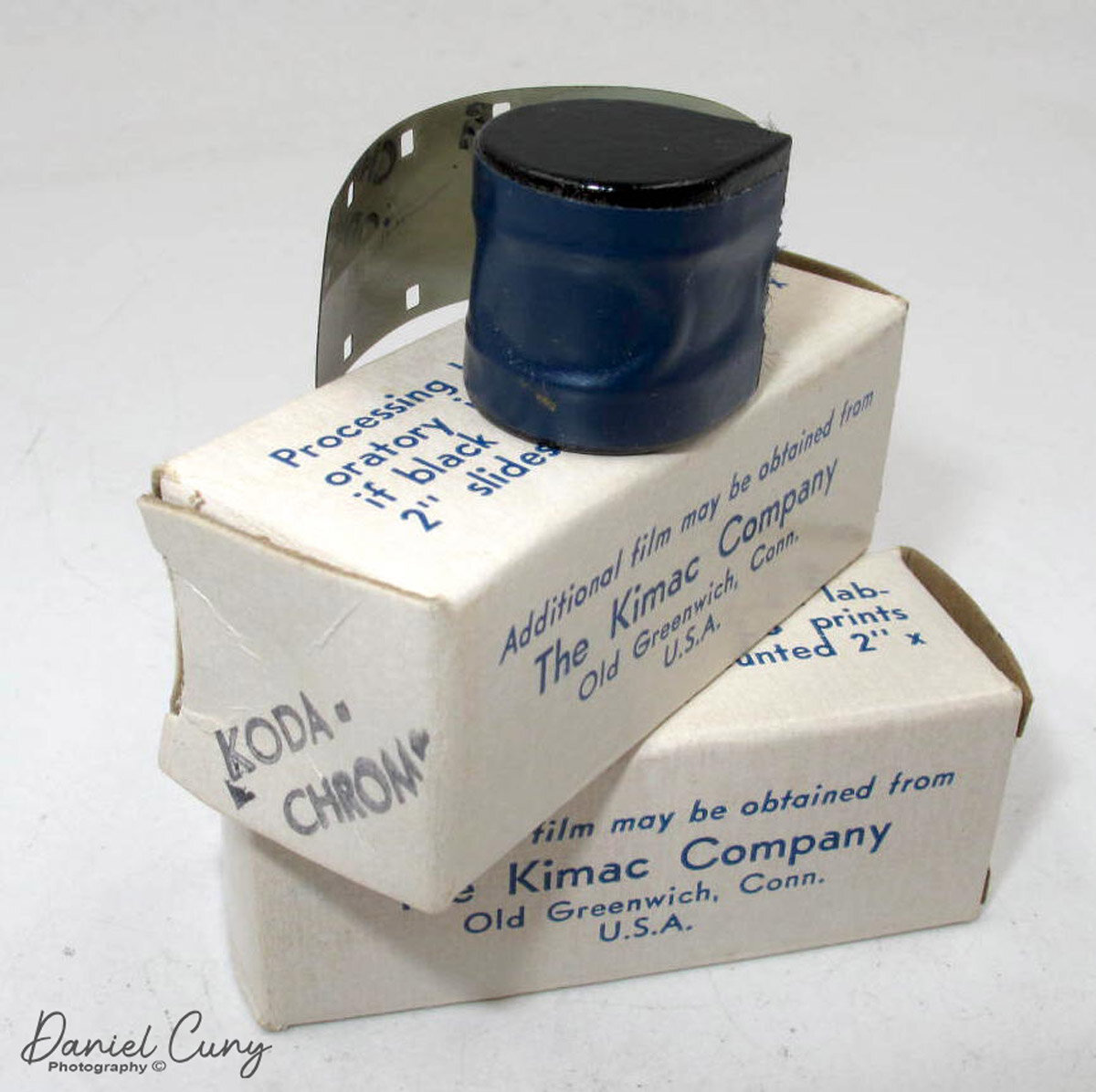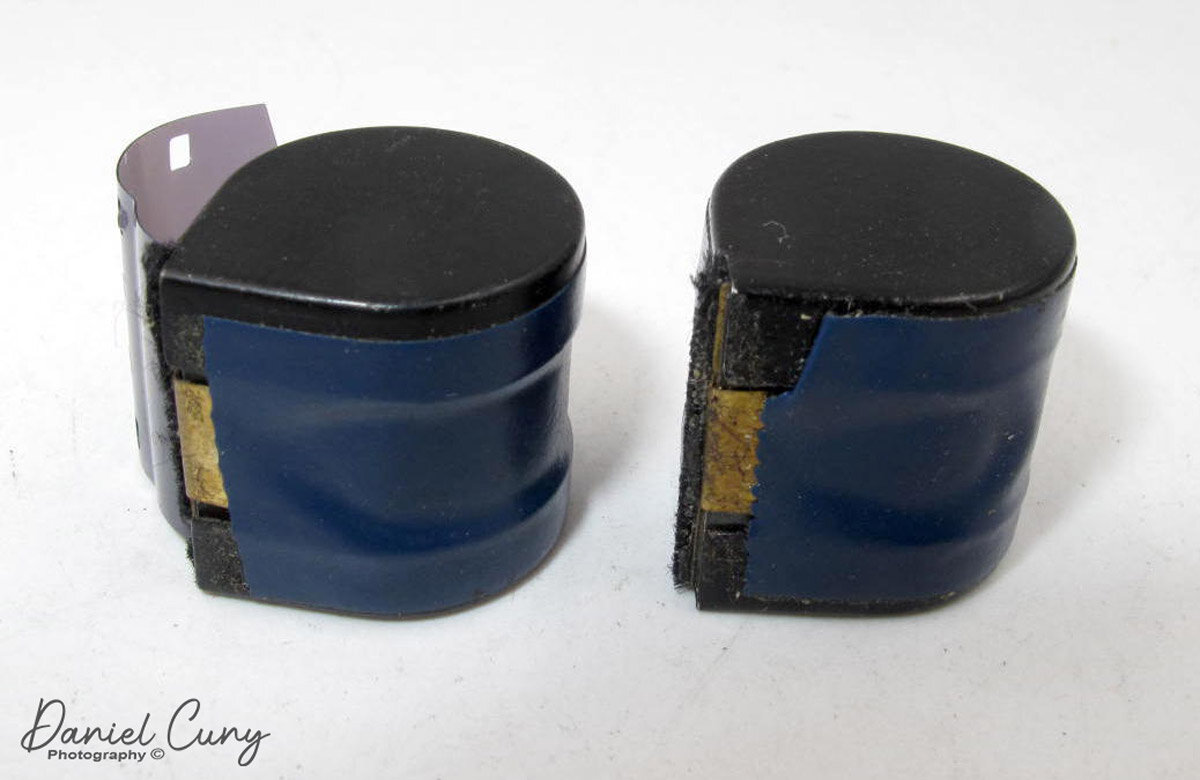I have spent hours and hours looking through the many editions of McKeown's Camera Guides in my library as it is the "Holy Grail" of camera collecting & pricing books. I've been reading and collecting his books going back to 1984 and have many other camera collecting price books. Their 12th edition from 2005-2006 is a massive 1200 plus pages of cameras, camera companies, and prices. To this day, I still enjoy just thumbing through and have it on my desk. I don't use it for pricing as much anymore as there are more current ways to look up pricing online.
As I've mentioned in other posts regarding cameras I have in my collection, I'm attracted to them if they are odd, unusual, or colorful. The Stylophot made by Secam in France is just the item that truly catches my eye. It's similar in shape to a large fountain pen and even has a pocket clip just like fountain pens have, so you can clip it to your breast pocket and have it available whenever you need it. I didn't have much luck finding information on SECAM, the camera company, but I did find information on the designer.
Camera Designer
The designer of the Stylophot and many other cameras was Fritz Kaftanski. He has a pretty fascinating story. It's a story that involves many camera designs and the countries he lived in. He was born in 1899 in Essen, Germany. His parents were Giulio and Julie Kaftanski, of Jewish origin. During WWI, he worked for Deutsches Heer, analyzing the photos of the aerial reconnaissance in Berlin. In February 1927, he married Sybille Essen, and in November of the same year, he started Fotofex Kameras with financial help from his father in law. In 1934, Fritz began SIDA GmbH in Berlin.
In 1939 he escaped Germany and moved to Prague, Czechoslovakia, where he started SIDA-FEX camera company. In 1945, he moved to France, where he was involved in FEX-INDO in Lyon in 1938, Kafka in Paris in 1945, and SECAM in 1955, where he designed and made the Stylophot camera. You can see more information on the cameras Fritz Kaftanski designed here.
Stylophot Camera with film, case, instruction manual, and more.
The Camera
I purchased my Stylophot several years ago, and it indeed was a complete kit which included the lens hood, case, box, instruction manual, warranty card, two rolls of film, 1-Plus-x, 1-Kodachrome, & film processing mailers. These all came from what I believe was their distribution company in the US, The Kimac Company, Old Greenwich Conn. The film boxes, processing mailers, and Instruction manual have The Kimac Company on them. I even found a version of the Stylophot camera called The Kimac Private Eye.
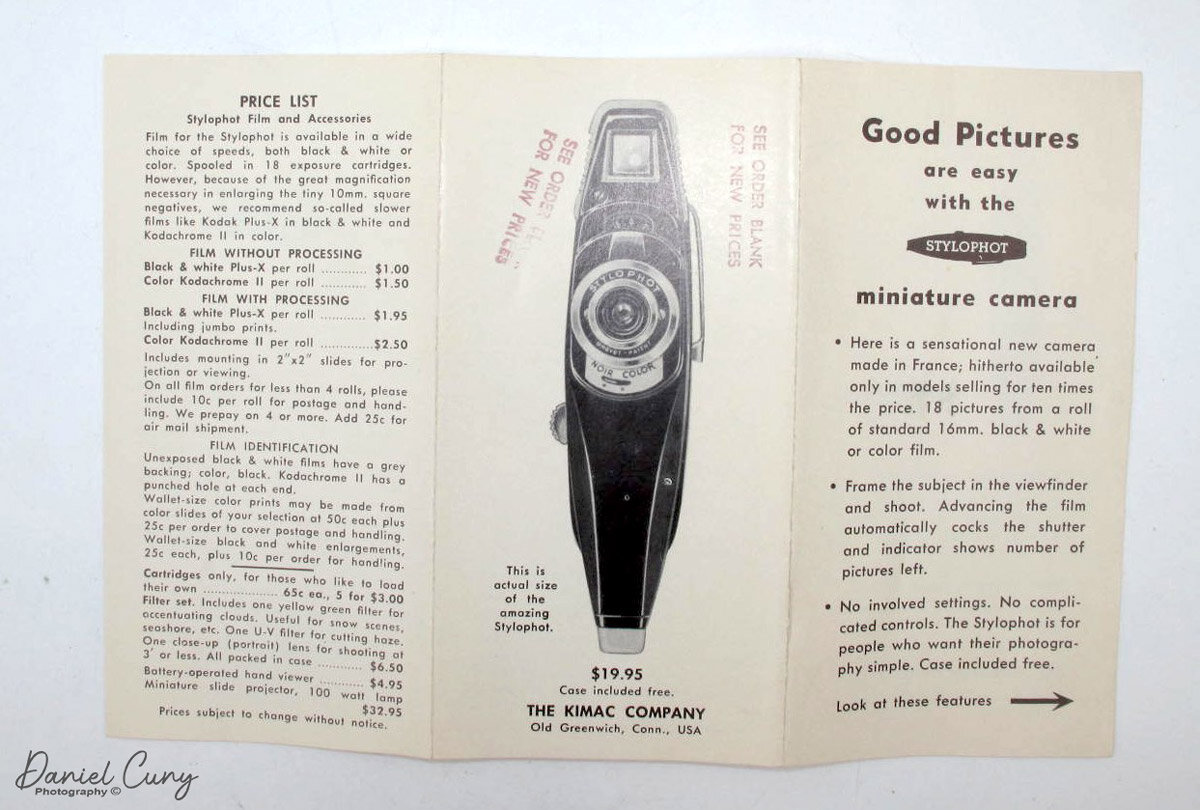


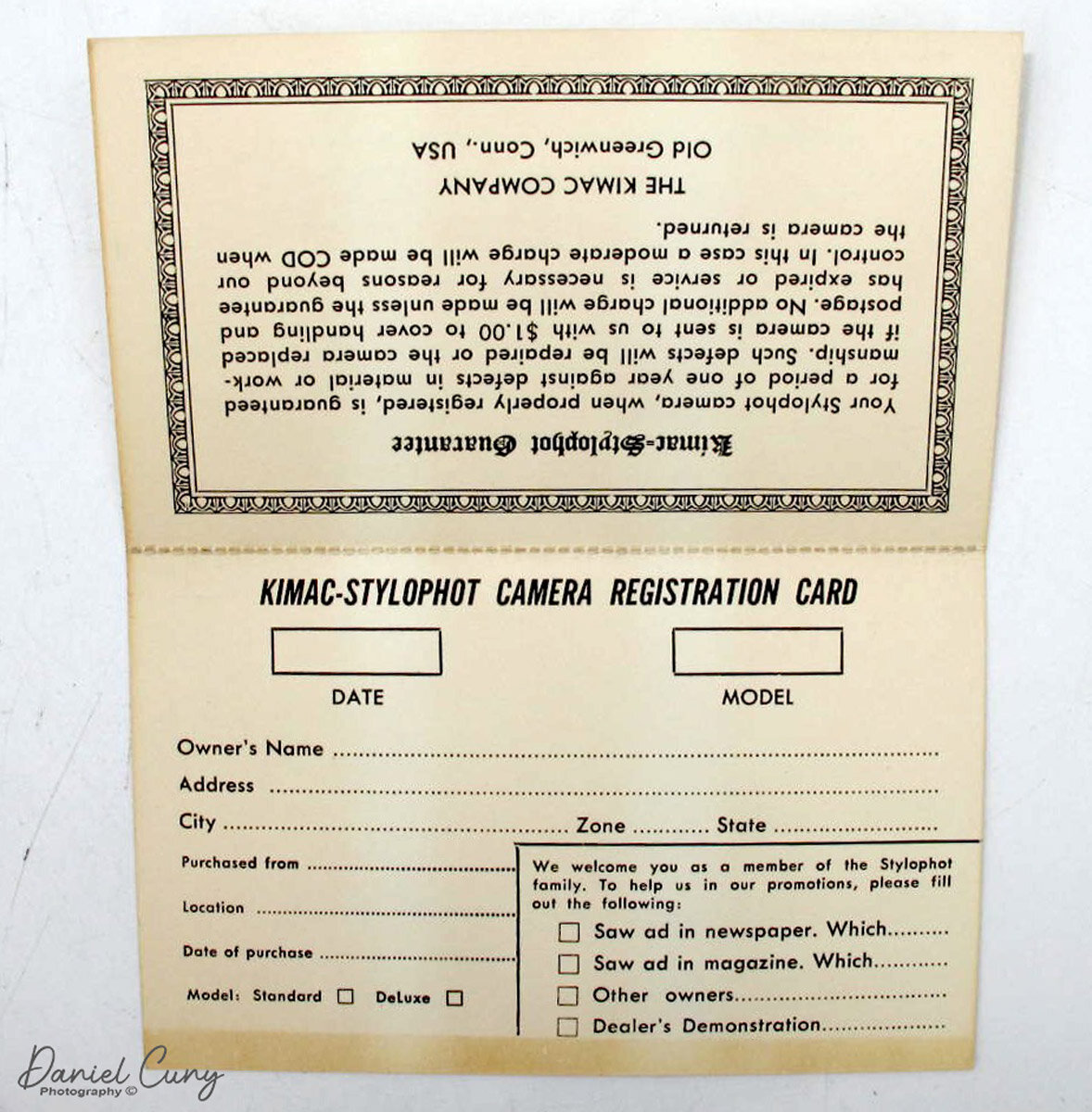
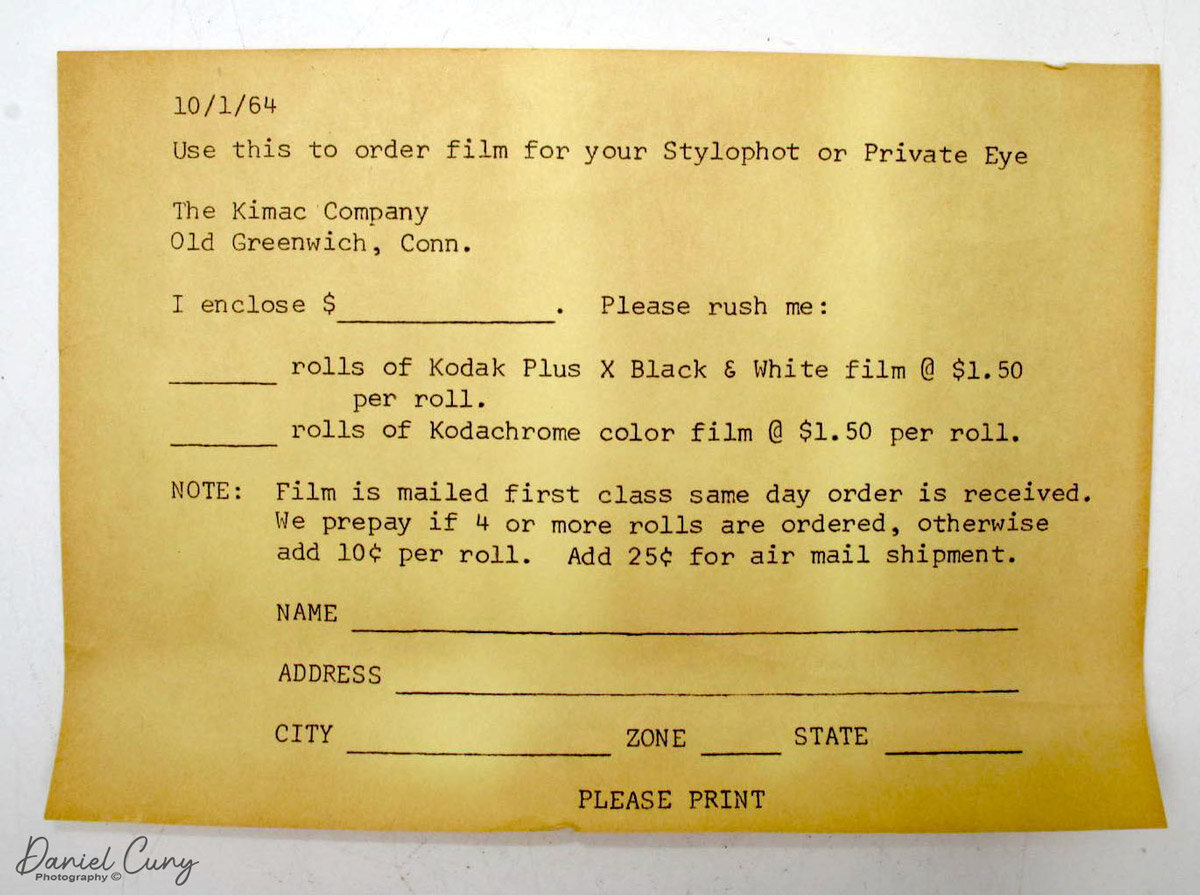

The Stylophot was introduced in 1955 and is a subminiature camera that produces 18, 10x10mm images on 16mm film. This plastic camera measures 4.5" tall by 1.25" wide, including the pocket clip by 1.75" deep, including the lens hood. It's 1.5" deep without the lens hood. The mechanics of the camera appear very well made. There are many different variations on the Stylophot cameras, but all "resemble" a bulbous fountain pen, and all seem to work the same way. There's even a German version distributed by Kunis named Foto-Füller and a Lexus version with a snakeskin cover.
The camera has a fixed focus 27mm, f6.3 coated lens. The "standard version" has two aperture settings for Noir (black & white) F11 setting, or Color, which was F6.3. The aperture settings are under the lens itself. Looking through the viewfinder, if the color is orange, it means the camera is NOT read to shoot. Pulling up on the saw-toothed silver guide on the sides of the viewfinder cocks the shutter and takes the "orange" color away from the viewfinder, so you know it's OK to shoot your photograph. The shutter release is a silver trigger on the right side of the camera below the lens. The shutter speed is 1/50. Sliding in back down advances the film, and put the orange back in the viewfinder as your warning. The frame counter is on the front of the camera, just under the viewfinder window.
There is a sliding lever on the back to load the film. Sliding the lever up releases the cover and exposes where the film is loaded. The film travels from the top to the bottom cassette, as seen in the photos. The pocket clip is attached to the back too. Another oddity is the film cassettes. There is old tape on the outside, and I'm guessing you removed the tape to open the cassettes to load them from one cassette to the other. I haven't removed the tape as it's old and brittle, but I should buy some film to try it someday. There is a small threaded socket, so I imagine you could mount this on a tripod or stand if needed.
Conclusion.
The Stylophot is a unique camera in my collection. I never really had an affinity for the subminiature camera, but I'm guessing that 25% or more are smaller cameras looking through the collection. I enjoy all cameras and photo items. All you need to do is come into my office someday, and you'll know for sure my love for anything photographic.
Thank you for taking a few minutes from your day to look over the post, and I would love to hear from you. If you have questions, concerns, or want to drop me a line about this camera or any other, let me know. If you have friends looking to sell cameras, give them my name, I'm always looking.
Until next week, please be safe.
